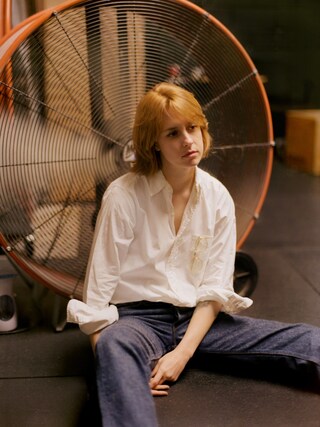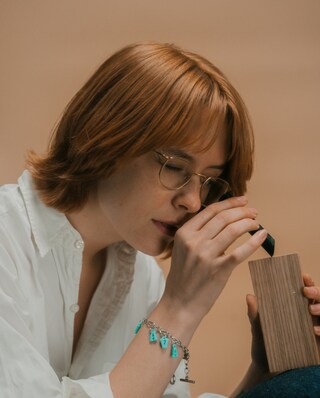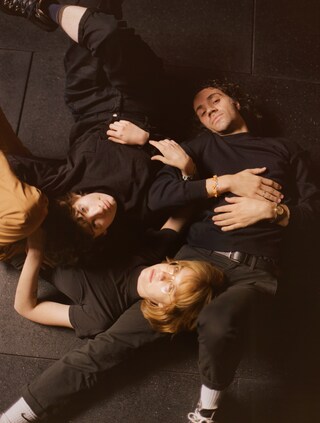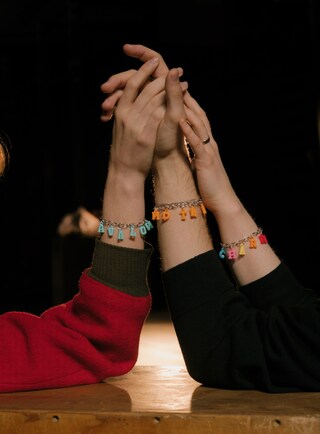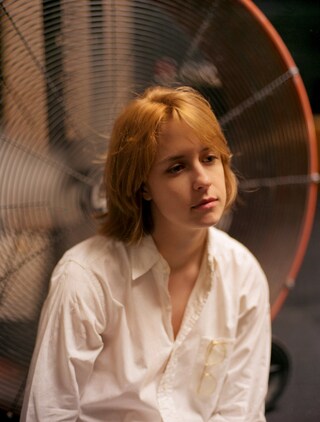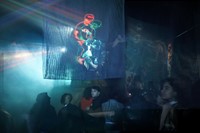Three years ago, Avalon Emerson was growing tired of her DJ career – literally. As one of the most in-demand figures in dance music, Emerson had been playing multiple international gigs every weekend, and the late nights and long-haul flights of her “road dog” lifestyle were starting to take a psychic and creative toll on her. “There were definitely times where it felt like I was playing the same video game over and over again,” Emerson says, speaking from her house in rural northern New York. “I felt there was another way of writing and touring that was calling me.”
The plan was to leave her home in Berlin and spend a few months in LA focused solely on making music. As a producer, Emerson was known for crafting major club and festival anthems like her 2016 breakthrough “The Frontier” (later voted one of the defining tracks of the 2010s by the leading electronic music publication Resident Advisor). But in LA, she wanted to branch out stylistically and try her hand at producing for other artists and collaborating with the city’s songwriting community. “I was like, ‘I’m gonna do the LA thing and go make music with people!’” she says, putting on a mock valley girl accent.
It didn’t work out. By the time she and her wife, the guitarist Hunter Lombard, had renewed their driving licences and set themselves up in the city, it was February 2020. You can probably guess what happened next. Emerson was only able to fit in a session with one artist before LA locked down for the next 15 months. “I thought, ‘Well, I definitely can’t DJ again, and I’m not necessarily feeling inspired by club music,’” she recalls. So she moved again, driving from coast to coast and ending in New York City, where Lombard had family – a heroic road trip that was captured in the music video for 2020’s “Long Forgotten Fairytale”.
Emerson’s DJ sets have always been musically diverse and technically dextrous, but confined to a cramped Brooklyn studio, the sounds and styles she found herself exploring had little in common with the buoyant and expressive tracks you’d hear on the dancefloor. Instead, she looked to the melodic, song-based indie-rock and dream-pop bands she grew up on, like The Magnetic Fields and Cocteau Twins. “Song structures, lyrics, and musical patterns that were different to what I was used to,” she says of her recordings. “I’m calling it ‘a pop song’: it’s three or four minutes, it has a song structure, a chorus, and lyrics. If I had stuck to the pre-prescribed three months in LA that I thought I would be doing, I doubt this would have happened.”
This year Emerson will release her debut album under a new project name, Avalon Emerson & the Charm. It’s a lush leftfield pop record where Emerson sings across its nine tracks. The mood is low-key, with warm sonics and lyrics flecked with a wistful melancholy. It’s subtle but not simple; Emerson is a gifted melodic songwriter with a keen understanding of synthesis and groove. It’s a natural evolution for the artist, for whom melody has always played a key role, whether in her own productions, in her remixes for pop singers like Robyn and Christine and the Queens, or in her DJ sets, where – even when performing an hours-long set in a club like Berghain – she would eschew strict, functional techno to drop a track by Nine Inch Nails or Crystal Castles into the mix instead. “I knew if I wanted to make an album it wouldn’t be instrumental electronic music,” she says. “It still feels totally exciting and fresh to me. I see myself doing music like this for a long time.”
Emerson is speaking today from the joint studio/guest bedroom of her home in the Catskills, where she and Lombard have been living for almost two years. “The older I get, the less of a big city person I’ve become,” she says of her move. “I had some friends who have a house up here. Hunter and I had visited a few times and I was just like, ‘I want some of this.’ There are people we’ve met in the music community up here and we do little parties every once in a while, and potlucks, and swimming in the lakes.” There’s space for pets too, evidenced by the clattering from outside the frame of our video call. “Sorry – my dog,” Emerson says. “Every time I get on a call, it’s suddenly party time.”
‘“I knew if I wanted to make an album it wouldn’t be instrumental electronic music. It still feels totally exciting and fresh to me. I see myself doing music like this for a long time’ – Avalon Emerson
When it came to making the album, recorded over a two-year period between 2020 and summer 2022, Emerson sought out the like mind of British musician Bullion, real name Nathan Jenkins, to help bring her ideas to life. “A great producer has hard skills and soft skills,” Emerson says of the album’s executive producer. “The soft skills Nathan has is where it feels like a comfortable environment in his studio to shout ideas or say ‘No, I don’t like this direction we’re going in, let’s try this other vibe.’ I could send him stems of a drum beat, or I could come to him with demos where I’d use VSTs and drum sounds that sound shitty on purpose, just so that I wasn’t getting bogged down in sound design stuff. But also the songwriting and lyrics, hearing how the phonetic poetry and words can come together – he’s really good at it. I’m excited I got to work with him before he gets too famous, basically.”
There are other performers on the album, notably her wife Lombard and cellist and bassist Keivon Hobeheidar, a friend from her hometown. Both play on the album’s lead single “Sandrail Silhouette”. The song started life as just an instrumental drum loop and Lombard’s jangle-pop guitar, recorded back in LA in early 2020; they revisited the sketch while spending a month at Bullion’s studio in London the following year, adding some chords and live piano and humming some vocal melodies before inviting Hobeheidar down while he was visiting family in the UK, who added the song’s “A Thousand Miles”-esque dramatics. Such a straightforward way of working was eye-opening. “This was the first time where the end result of a really good piece of music didn’t have to come out of this laborious, nose-to-the-grindstone, banging-your-head-against-the-wall process,” Emerson says. She laughs about her conversion, as if she was the first person to ever collaborate with another musician. “I know, I know, I feel like I was only just discovering it as this lonely DJ.”
If before she felt like she was stuck replaying the same video game level, now Emerson was solving puzzles, unlocking new abilities on the skill tree. Or as she puts it, it was “like playing Silent Hill. You’re walking through a house and it’s all dark, you have your flashlight and you can only see what’s right in front of you. That’s been my experience of this whole project. I have to shine my light and figure out where everything is, and not die along the way.” Whenever she hit an obstacle, “I’d just shine a light in the corner of the room and kill all those monsters. Now I’m like ‘OK, I can do it. And I can do it a few other times.’ And now I have this album.”
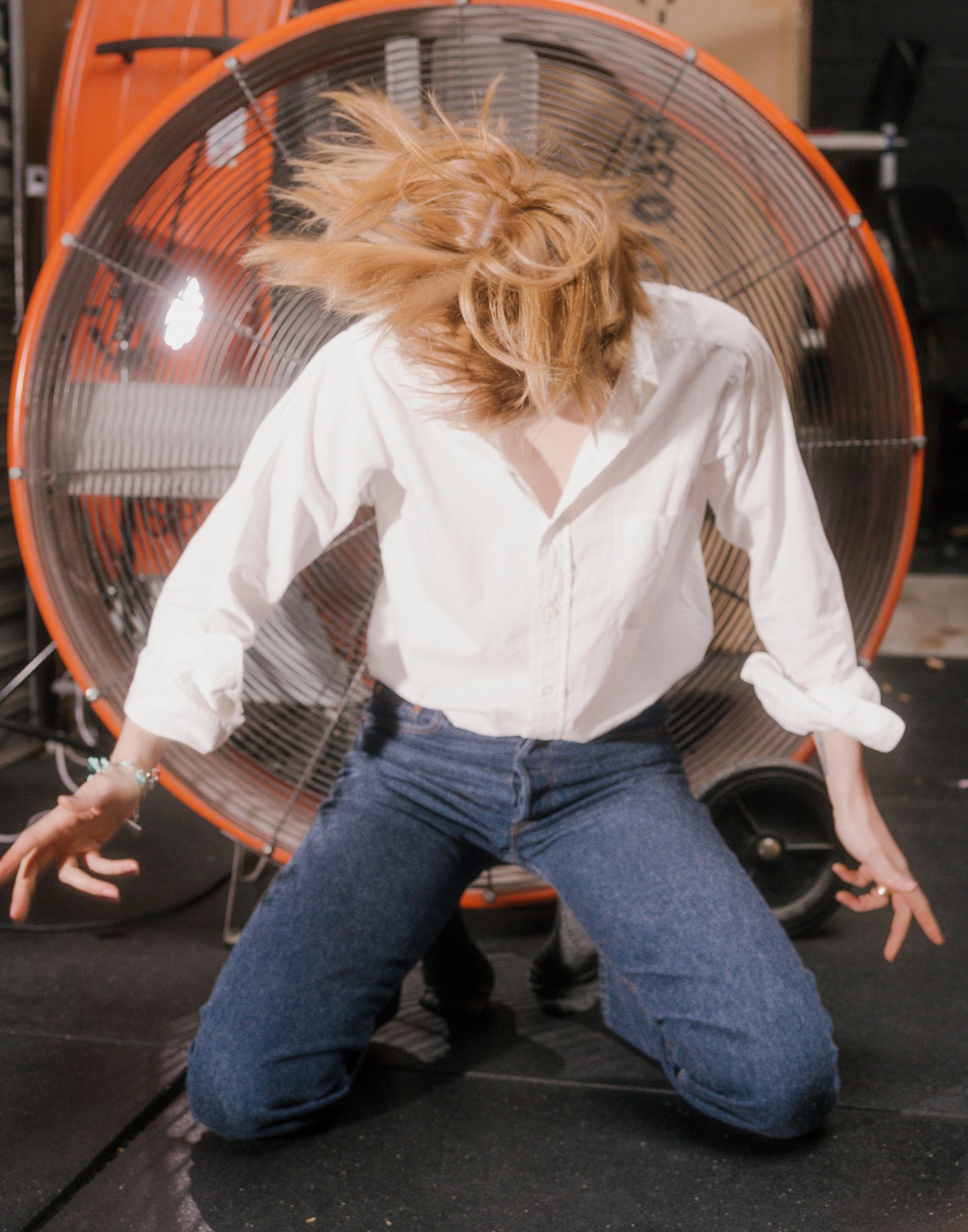
Part of recording the album meant writing lyrics for the first time. “Writing lyrics and putting out thoughts to be understood and misunderstood by external listeners made me think, ‘What do I want to talk about and say?’ My relationships with friends and work, and my family – all that stuff made it into the record. It’s very autobiographical, frankly.” On “Karaoke Song”, which she made with Nick Sylvester in LA, she explores “the series of mundane interactions and banal information” that make up an intimate relationship. “It’s basically a list of those things: ‘What did you wear for Halloween, what did you do on New Years, how’s your mom, what show are you watching now?’ Things you know about someone, and then years later you don’t know anymore.” On lead single “Astrology Poisoning”, she asks what happens when we “push out space for certain kinds of woo-woo, mythological, religious” thinking, and how individualised responses like astrology fill the vacuum, “without the same benefits as a community and church”.
There are certain images that recur across Avalon Emerson & the Charm’s songs, with lyrics that reference rocks and stones, rivers and deserts, infernos and oceans. But it’s not all verdant flora: there’s also ash, wastelands, and lungs that “can’t breathe the sky”. Even if climate change is not part of a song’s subject matter in any literal sense, the language suggests it’s something weighing on Emerson’s mind. “Every fucking year is awful for fire season, but there was a time that hit me very hard and threw me into a gnarly depression for months. Even thinking about this really upsets me.” She sighs. “It becomes harder and harder to talk about climate change without sounding glib, like it’s some sort of talking point. But it’s something I feel connected to, and it really bums me out. Any participant in capitalism is at fault – but being a touring musician, where my job is being on aeroplanes, is really hard to reckon with.”
Although she was born in San Francisco, Avalon Emerson grew up in Arizona: “A beautiful, beautiful place, and after visiting so many places, it’s still unique. Parts of it look unlike anywhere else I’ve ever been.” Her town, Gilbert, was oriented towards young families, and in her large high school she began experimenting with making “guitar music and layered stuff”. There was another project before that though: “When I was maybe in third grade, I would make stuff with my sister,” Emerson says. “We were really into Beanie Babies. We had this whole world that everybody occupied, this Beanie Baby civilisation, and part of that was these two Beanie Babies who were in a band together. So we made songs that they sang on a really old version of Cakewalk. I can’t discredit that as my first foray.” A quirk of Arizona’s demographics – the state borders Utah, home of the Mormon church – inadvertently provided opportunities for local kids to create. “There are a lot of juice bars there, because Mormons don’t drink,” she explains. “These were all-ages venues, so there were places to make and play music. The whatever wave of emo and hardcore was happening in the early/mid 2000s, and there was a lot of folky stuff, a lot of massive pedalboard shoegaze/noise sets.”
Still, she wanted to be closer to a real music scene, and at 18 she returned to San Francisco, where she started DJing at warehouse parties and raves while interning in the tech industry, later pursuing an engineering career herself. “When I had moved out there it didn’t feel quite so overrun by technology brothers,” she says. “It was a little bit more of a cultural hub by way of music and art. It wasn’t all just PMs at Meta making $400,000 eating pork belly for their entertainment every weekend.” By 2014, though, the joy was being drained from the city and her work. “You had to look so hard to find the good in what you were doing, but it was very easy to see the frivolousness,” she says. “I had a couple of friends in Berlin and I’d just got a big tax return. I was like, ‘Later!’”
‘I feel connected to [the climate crisis], and it really bums me out. Any participant in capitalism is at fault – but being a touring musician, where my job is being on aeroplanes, is really hard to reckon with’
Berlin offered the chance to make music and be surrounded by artistic people. “Musician, photographer, sculptor – I knew people out there genuinely making a living doing these things and weren’t just a secret rich kid,” she says. She continued working in tech, assuming that DJing would remain a hobby (back then Berlin’s “DJ-industrial complex” hadn’t quite become as professionalised as it is today), but her releases started to get more attention and her bookings picked up. “I was still working full-time at a day job, but I’d bring my suitcase to work on Friday, go to the airport, do some shows, and then be at the stand-up on Monday. It was pretty gnarly for a while, but it was so exciting that I could focus on music and spend so much time on it.” During the pandemic, Emerson found herself thinking about her old life a lot, wondering if she could get back up to speed with engineering given all the technological shifts in the industry since she left. “I thought, ‘Maybe I can get a CS degree finally?’ But in the end, all this happened, and I’m still a fucking DJ.”
This will, however, change next month, as Avalon Emerson & the Charm embark on their first-ever tour as a live band. Emerson will be joined by Lombard and Hobeheidar, with lighting design by Shaun Murphy – and their first show will not be in a nightclub, but at London’s reliable rock pub The Shacklewell Arms. To prepare for the tour, she’s been working out how to translate the studio recordings of her new songs to the live stage, which means interpolating synth basslines into something a human can play and working with a vocal coach to take care of her voice. “That part is another room in the Silent Hill house. Can I even do this?” she says. If we’re back to the video game analogy, then who’s the final boss she has to face up against? “I feel like my Pyramid Head is going to be travel,” she says. “And you’re never gonna be able to defeat him, he’ll just keep coming back. That’s going to be the real challenge.”
None of this is to say that Emerson is – to borrow a phrase from one of her musical heroes, Arthur Russell – losing her taste for the nightlife. If anything, making this album while successive lockdowns and travel restrictions prevented her from DJing only reminded her why she fell in love with dance music so much in the first place. “I don’t want to leave DJing behind. In fact, if someone said that I couldn’t ever play Panorama Bar or Nowadays again, that would be horrifying; the worst thing,” she says. “But there’s this other new source of energy in my life, and I wanted to go on tour with it and play it with people I love.”
Join Dazed Club and be part of our world! You get exclusive access to events, parties, festivals and our editors, as well as a free subscription to Dazed for a year. Join for £5/month today.


